Perched atop a hill, the historic city of Évora encapsulates Portugal’s storied past. From its prehistoric roots to its Roman, Visigothic, and Moorish influences, this museum city chronicles the nation’s evolution. Iconic landmarks like St. Michael’s Palace and the University of Évora reflect the country’s regal and intellectual heritage. Yet, the haunting Chapel of Bones poignantly reminds visitors of life’s fragility, making Évora a profound testament to Portugal’s rich and complex history. Delve deeper into this captivating city, and uncover the multifaceted narrative that has shaped the Portuguese identity.
Good To Know
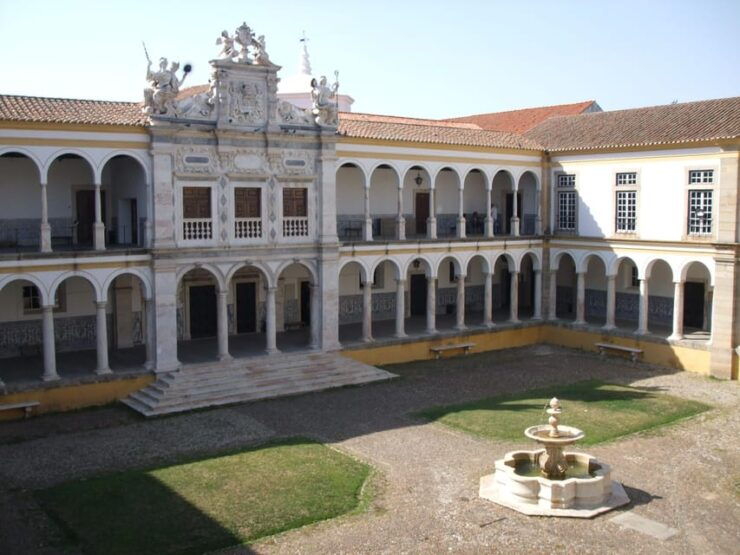
- As a museum city, Évora showcases Portugal’s rich history from prehistoric origins to the modern era, serving as a living testament to the country’s cultural development.
- Évora’s strategic location and evolution from a Roman outpost to a prominent medieval religious and political center reflect pivotal periods in Portuguese history.
- The city’s iconic landmarks, such as the Aqueduct, Chapel of Bones, and University, highlight Portugal’s architectural, educational, and religious heritage.
- The Renaissance-era St. Michael’s Palace and Praça do Giraldo Square exemplify Évora’s role in shaping Portugal’s royal and cultural identity.
- The Chapel of Bones, with its poignant display of human remains, provides a thought-provoking window into the country’s past and its people’s perspectives on mortality.
Exploring the Museum City
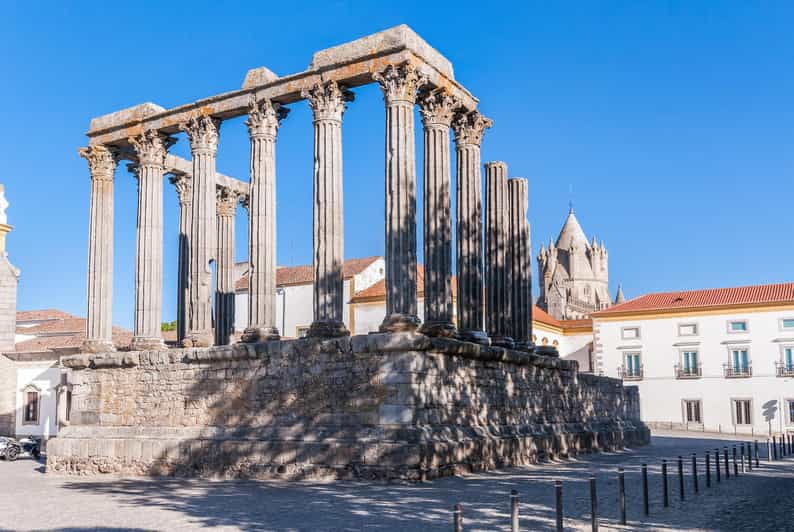
Évora, a museum city steeped in history, offers visitors a captivating journey through Portugal’s past, from its prehistoric origins to its vibrant present. This ancient settlement, dating back to the Stone Age, showcases a remarkable historical legacy, with each era leaving its indelible mark.
Visitors can explore the city’s Roman temple, medieval churches, and Renaissance palaces, all while seeing the rich tapestry of Portugal’s cultural heritage. The tour’s carefully curated itinerary takes guests through the city’s most iconic landmarks, including the impressive Aqueduct and the Chapel of Bones, providing a deep dive into the evolution of human civilization.
Évora’s blend of historic charm and modern vibrancy makes it a must-visit destination for those seeking to uncover the captivating story of Portugal.
Interested in history? More Evora historical sites we've covered
Prehistory to Modern Times
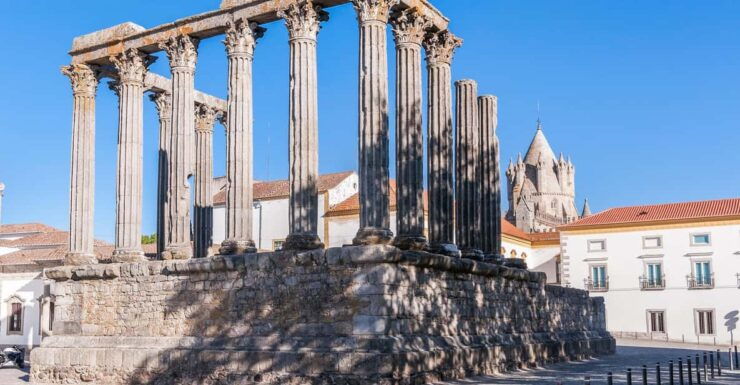
Portugal’s history spans millennia, tracing its roots back to the Stone Age and unfolding through the rise and fall of empires, religious upheavals, and the forging of a distinct national identity. From the Celts and Romans to the Visigoths and Moors, each civilization has left an indelible mark on the country’s cultural and architectural landscape. The tour of Évora provides a window into this rich tapestry, showcasing the city’s evolution from a prehistoric settlement to a thriving medieval hub and eventually a center of Renaissance learning. Through the guided exploration of landmarks like the Chapel of Bones and the University of Évora, visitors can enjoy Portugal’s captivating journey from antiquity to the modern era.
| Era | Significance |
|---|---|
| Prehistoric | Earliest human settlements in the region |
| Roman | Évora becomes an important Roman outpost |
| Visigothic | Christian influences and architectural developments |
| Moorish | Islamic culture and trade networks emerge |
| Medieval | Évora rises as a prominent religious and political center |
| Renaissance | University of Évora becomes a hub of learning and culture |
Guided Tour Highlights
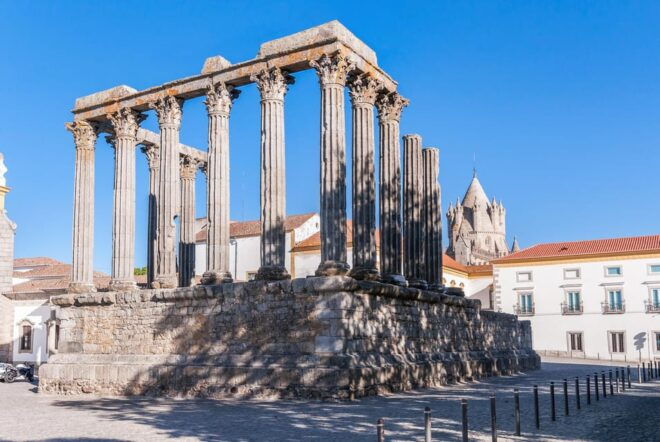
The guided tour through Évora’s historic landmarks offers visitors a captivating journey through Portugal’s rich past, immersing them in the city’s evolution from a prehistoric settlement to a renowned center of learning and culture.
Highlights of the tour include:
St. Michael’s Palace, a magnificent Renaissance-era structure that once housed the Portuguese royal family.
The Church of St. Francis, a stunning example of Gothic architecture with elaborate decorations and a chapel made entirely of human bones.
The University of Évora, a prestigious institution founded in the 16th century that played a crucial role in shaping Portugal’s intellectual and cultural landscape.
The iconic Aqueduct, an engineering marvel that supplied water to the city for centuries.
St. Michael’s Palace and Beyond
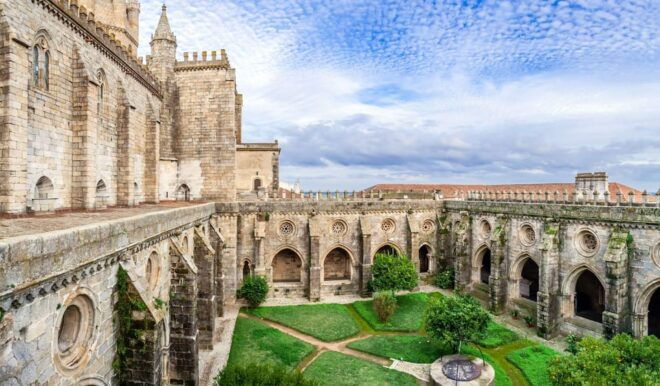
After exploring the captivating history of Évora’s landmarks, the tour moves on to uncover the grandeur of St. Michael’s Palace, a magnificent Renaissance-era structure that once housed the Portuguese royal family.
Visitors will marvel at the palace’s intricate architectural details, from the ornate façade to the beautifully manicured gardens.
Next, the group will venture to the iconic Praça do Giraldo, a lively square that has served as the heart of Évora for centuries.
Here, they’ll learn about the square’s significance in the city’s past and its enduring role as a hub of activity.
The tour then continues to the Church of St. Francis, where guests will be captivated by its striking Gothic design and rich historical significance.
More Great Thing To Do NearbyPraça Do Giraldo and Landmarks
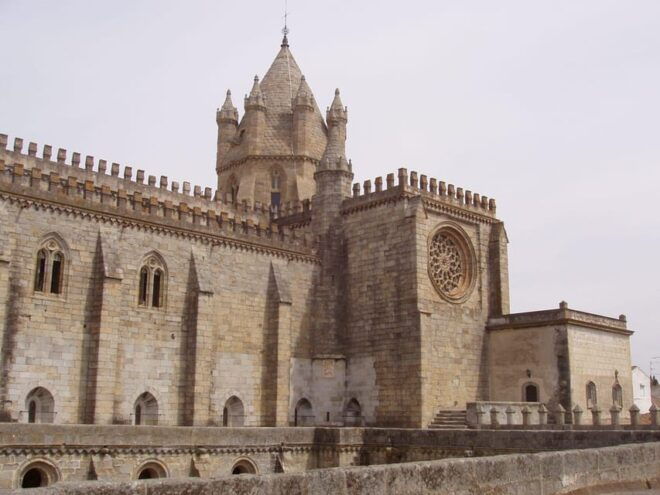
Nestled in the heart of Évora, Praça do Giraldo is a captivating square that has witnessed the city’s vibrant history for centuries. Visitors are immediately drawn to its charming architecture, including the impressive 16th-century fountain and the striking buildings that line the perimeter, each offering a glimpse into Portugal’s rich past.
From this central plaza, the tour continues to several notable landmarks:
The Church of St. Francis, a stunning example of Gothic-style architecture.
The College of the Holy Spirit, now home to the University of Évora, a renowned institution with deep roots in the city’s cultural heritage.
The Cathedral of Évora, an impressive Romanesque-Gothic cathedral that dominates the city’s skyline.
The Royal Palace of Évora, a testament to the region’s royal lineage.
University of Évora and Cathedral
Looming over the historic city center of Évora, the University of Évora stands as a beacon of knowledge, its halls echoing with centuries of academic pursuit. Established in the 16th century, this esteemed institution has long been at the forefront of Portugal’s intellectual and cultural landscape, drawing scholars from far and wide to its renowned programs.
Adjacent to the university, the magnificent Cathedral of Évora commands attention with its imposing Romanesque and Gothic architecture. Visitors can ascend to the cathedral’s rooftop, where they’re rewarded with breathtaking panoramic views of the city’s red-tiled roofs and winding streets.
These two landmarks, the university and the cathedral, are integral to Évora’s rich heritage, showcasing the city’s enduring commitment to education and faith.
Royal Palace and Aqueduct
The Royal Palace of Évora stands as a testament to the city’s regal past, its stately façade and ornate interiors offering glimpses into the opulent lives of Portugal’s former monarchs.
Nearby, the towering Aqueduct of Évora, a masterpiece of engineering, stretches across the city’s landscape, its arched spans carrying a vital supply of water to the inhabitants for centuries.
As visitors explore the palace, they’ll discover:
Exquisite Renaissance architecture and intricate tiled floors.
Lavish royal chambers adorned with tapestries and antique furnishings.
Magnificent halls where state ceremonies and royal receptions were once held.
Stunning views of the city from the palace’s balconies and terraces.
Unforgettable Chapel of Bones
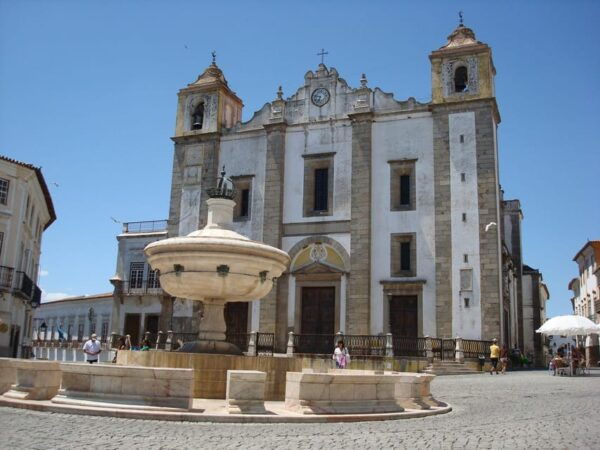
Among the most captivating stops on the tour is the Chapel of Bones, a unique and macabre structure that profoundly impacts visitors with its somber message. This ossuary, adorned with the skeletal remains of over 5,000 individuals, serves as a poignant reminder of the transience of human life. As visitors enter, they are confronted with an eerie, yet thought-provoking display, inviting them to reflect on their own mortality. The chapel’s haunting atmosphere and the artful arrangement of bones create a powerful emotional experience, leaving a lasting impression on all who witness this extraordinary piece of history.
| Intriguing Facts About the Chapel of Bones | |
|---|---|
| Construction | 16th century |
| Purpose | Ossuary |
| Number of Skeletons | Over 5,000 |
| Architectural Style | Gothic |
| Symbolic Meaning | Memento mori |
Frequently Asked Questions
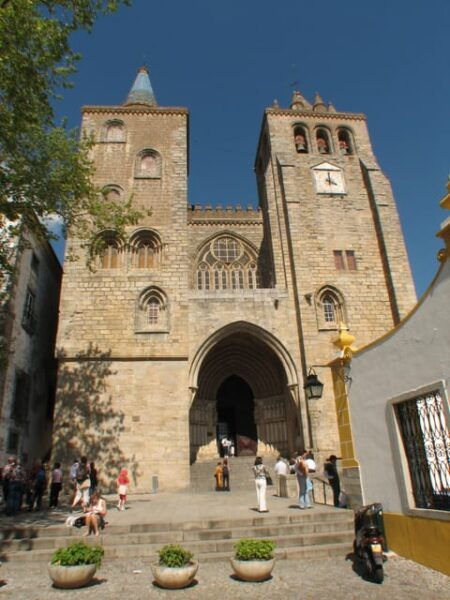
What Is the Maximum Group Size for the Tour?
The tour does not specify a maximum group size. Customers can reserve the tour for the number of participants they prefer, as long as the availability is confirmed for the selected date and time.
Are Children Allowed on the Tour and Is There a Discounted Rate?
Children are allowed on the tour, and there is a discounted rate for them. The tour offers reduced prices for child participants, making it accessible for families to explore the historical sites together.
Is the Tour Accessible for Individuals With Mobility Challenges?
The tour is accessible for individuals with mobility challenges. The itinerary includes stops with wheelchair-friendly facilities, and the guide can accommodate special needs. It’s recommended to inform the tour provider of any accessibility requirements when booking.
Do Tour Guides Provide Headsets or Audio Devices for Easier Hearing?
Tour guides typically provide headsets or audio devices to participants, allowing for easier hearing during the guided tour. This enhances the overall experience, ensuring visitors can fully engage with the historical narratives and information shared by the guide.
Can the Tour Be Customized or Personalized to Suit Specific Interests?
The tour can be customized to suit specific interests. Visitors can request additional stops or focus on particular aspects of history. The tour guides are knowledgeable and flexible, allowing for a personalized experience.
The Sum Up
Évora’s historical legacy is a captivating tapestry, weaving together ancient civilizations and Portugal’s regal past.
From the majestic St. Michael’s Palace to the haunting Chapel of Bones, this ‘museum city‘ offers a profound glimpse into the nation’s evolution.
Whether exploring the university’s intellectual heritage or marveling at the grand Praça do Giraldo, visitors to Évora are left with an indelible impression of Portugal’s rich and multifaceted history.
You can check if your dates are available here:More Historical Tours in Evora
More Tour Reviews in Evora
- (:) Alentejo, Hot Air Ballooning!
- Alfama: A Tuk Tuk Ride through Historical Lisbon
- Between Life & Death: Roman Temple, Cathedral & Bone Chapel
- Casa Relvas, Évora – Visit to the Winery with Tasting of Portuguese Grape Varieties and Tapas
- Evora Ancient City & The Alentejo Private Luxury Wine Tour
- Évora: Alentejo Region 7-Day Guided Cycling Tour
Looking for something different? Other Evora activities we've written about
- (:) Alentejo, Hot Air Ballooning!
- Alfama: A Tuk Tuk Ride through Historical Lisbon
- Between Life & Death: Roman Temple, Cathedral & Bone Chapel
- Casa Relvas, Évora – Visit to the Winery with Tasting of Portuguese Grape Varieties and Tapas
- Evora Ancient City & The Alentejo Private Luxury Wine Tour
- Évora: Alentejo Region 7-Day Guided Cycling Tour
- Évora or Montemor: Beekeeping Guided Tour with Honey Tasting
- Évora & Monsaraz : Charm and Chill with a Touch of Thrill
- Evora: City Tour – 10h
- Évora: Small Group Tour with Chapel of Bones “Skip the Line”
- Évora Full Day Tour on a Luxury Mercedes
- Évora: Visit to Monsaraz + Traditional pottery workshop in S. Pedro do Corval
